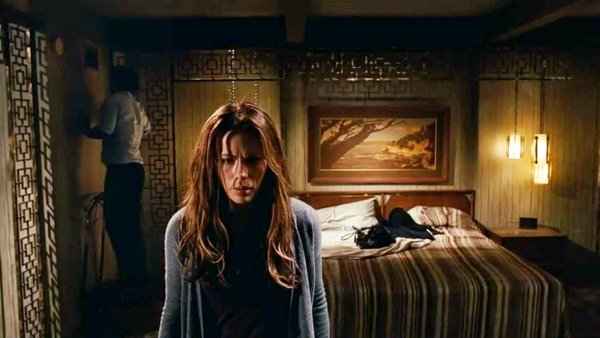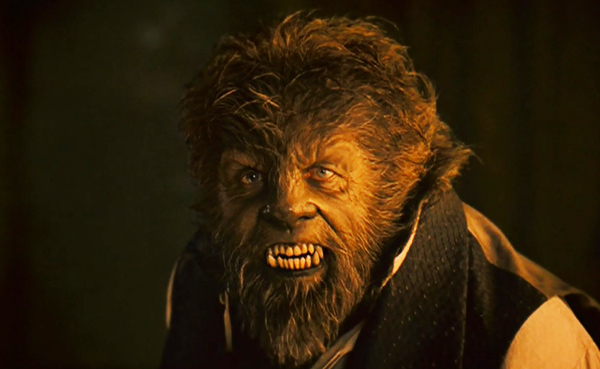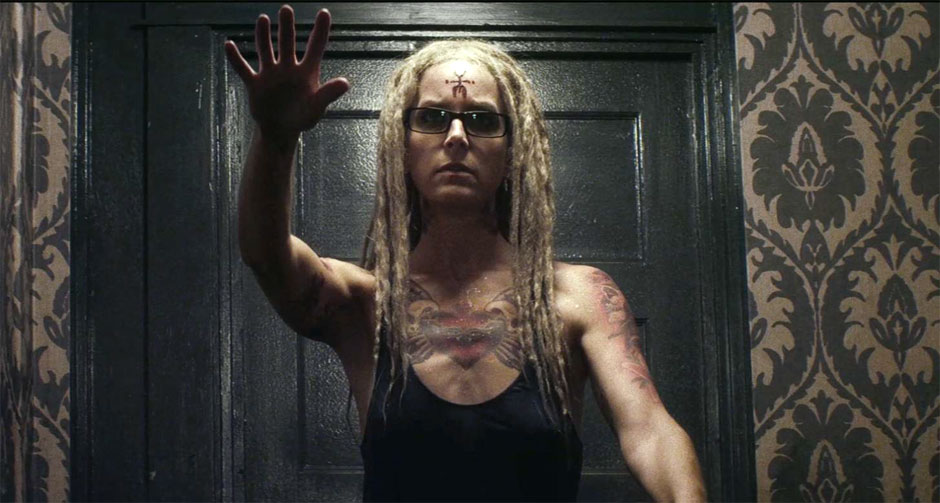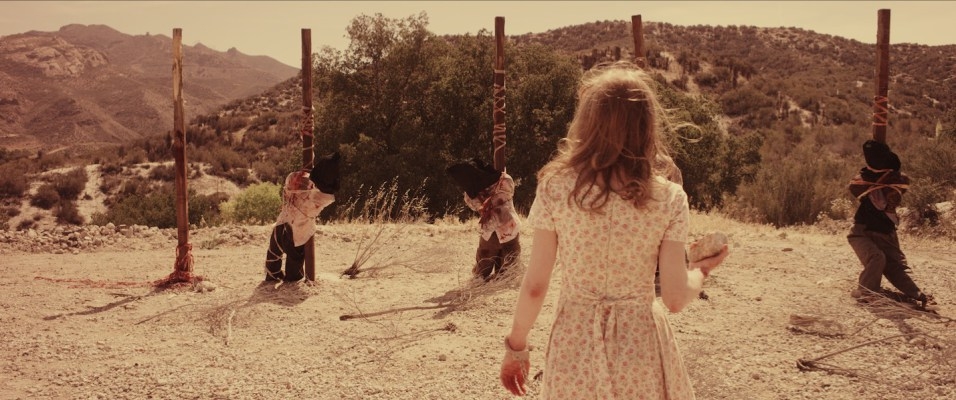6. Vacancy (Nimród Antal, 2007)

David (Luke Wilson) and Amy Fox (Kate Beckinsale) are a grieving couple on the precipice of divorce. When their car breaks down, they rent a motel room for the night. After watching videotapes left beside the TV, they realise they’re the next victims in a snuff film
Obtaining a lukewarm response, Vacancy has been omitted as a superb, focused psychological thriller with a simple yet engrossing premise. Vacancy’s quality is pronounced by never relinquishing its bloodcurdling suspense, rivalling Hitchcock. Wilson and Beckinsale’s acting is several rungs above typical genre performances, compelling the audience to share in their heart-pounding anguish.
On top of that, the claustrophobic dread is augmented by being nearly entirely set at the seedy motel over the course of one night. Pulp Fiction DP Andrzej Sekula captures it in a shadow-cloaked manner, underpinned by a cutting orchestral score. Although Vacancy’s essentially a riveting slice of popcorn entertainment, it substantiates how couples can put aside superficial squabbles to support one another.
7. The Wolfman (Joe Johnston, 2010)

In England, 1891, Lawrence Talbot (Benicio del Toro) returns to his family’s stately home to investigate the disappearance of his brother. His search leads him into the clutches of a fearsome beast, transforming his life forever.
In 2010, The Wolfman was a box office bomb and endured scathing reviews. Former president of Universal Studios, Ronald Meyer, went so far as to dub it “one of the worst movies we ever made.” By this description, one would anticipate The Wolfman to have an abysmal script, lazy cinematography, hammy acting, nonexistent direction, etc.
None of the above is true. On the contrary, The Wolfman is not a bad film by any stretch. It’s a stalwart remake of the 1941 version and an exemplary werewolf movie in its own right. Particular praise must be placed upon Emily Blunt and Benicio del Toro’s acting. The latter’s multilayered, sibylline turn amasses both pathos and fear, conflicting the audience’s affections like the ‘30s Universal monster movies.
In addition, acclamation should be awarded to the luscious cinematography, a solid script of stirring character arcs, moody lighting and the remarkable production value of the Victorian costumes and set designs. It’s high time audiences look past the unprecedented reviews of 2010, enjoying The Wolfman as the well-crafted gem that it actually is.
8. The Lords of Salem (Rob Zombie, 2012)

“If Ken Russell directed The Shining.” In Salem, Massachusetts, radio DJ Heidi Hawthorne plays a haunting record, causing her to experience visions of avenging witches. Soon, these visions are metamorphosed from history into the present. The Lords of Salem hosts a horror icon hall of fame: Ken Foree, Jeff Daniel Philips, Meg Foster, Patricia Quinn, Michael Berryman, Barbara Crampton, Lisa Marie, Udo Kier and Bruce Davison.
Carving originality in a genre that often resorts to derivativeness, the movie’s a stark departure from Rob Zombie’s proclivity for full throttle gore. This time, he composes disturbing, swelling terror rather than horror. The inscrutable margin between dreams and real life is assembled with creeping dolly pans, flashing psychedelic sequences, the uniquely terrifying monsters (such as surgeons with melted faces).
The ambience is unforgettably deepened by the appropriately scarring, nightmare-inducing dirge developed by John 5. In regard to its substance, The Lords of Salem examines societal prejudices towards heroin addicts through a humanistic study of Heidi. Furthermore, it scrutinises religious puritanism and the historical oppression of women. Next to The Devil’s Rejects, The Lords of Salem has been unrecognised as Rob Zombie’s operatic baroque masterwork. It was also adapted into a bestselling novelisation.
9. The Green Inferno (Eli Roth, 2013)

“The only thing those poseurs care about is looking like they care.” At university, Justine (Lorenza Izzo) enlists in a team of environmental activists. They venture into the Amazon rainforest to sabotage bulldozing, but are captured by a tribe of cannibals.
The Green Inferno attracted negative reviews and controversy. Critics took issue with what they perceived as a discriminatory portraiture of indigenous Amazonians and a promotion of neocolonialism. Director Eli Roth retorted: “the idea that a fictional movie about a fictional tribe could somehow hurt indigenous people when gas companies are tearing these villages apart on a daily basis is simply absurd. [It] all sounds like misdirected anger and frustration that the corporations are the ones controlling the fates of these un-contacted tribes.”
What is clear is that The Green Inferno intends to serve as a blunt environmental protest – an indigenous revenge movie. Journalistically, the film sketches every character with moral ambiguity and complexity. One switches between rooting for the Amazonians to their western captives and back again. In terms of filmmaking, The Green Inferno is undeserving of its poor rating.
Conversely, it’s a stellar, nail-biting horror flick, especially given the significant screenplay and its unforgiving assault on one’s emotions. Taking influence from the Italian cannibal boom of the early-‘80s, specifically Cannibal Holocaust (1980), The Green Inferno’s unrelentingly, shockingly grisly. Only seasoned horror fans may not bat an eye to a scene when a man is eaten alive by a horde of clawing villagers, deploying cogent practical effects.
10. Carnage Park (Mickey Keating, 2016)

The story takes place in the California desert, 1978. During a bank robbery, Vivian (Ashley Bell) is taken hostage by bandits Scorpion Joe (James Landry Hébert) and Lenny (Michael Villar). The movie switches genres from crime to horror. Pursued by deranged, rifle-toting Vietnam veteran Wyatt Moss (Pat Healy), Vivian finds herself functioning as prey in a cat and mouse hunt.
In his neo-western, enfant terrible Mickey Keating collages inspiration from Sam Peckinpah, Rob Zombie, Battle Royale (2000), My Bloody Valentine (1981) and the postmodernism of Quentin Tarantino. The latter’s influence is salient in aspects such as the exploitation cinema handling and intermittent non-linear ordering. Keating successfully delivers upon the grimy spirit of ‘70s midnight movies, making his 4th feature sumptuous for viewers seeking stylish, retro-harkening horror.
Experientially, indie darling Ashley Bell’s superlative, convincing performance serves as a fitting embodiment of the audience’s emotional arc. Moreover, the piece’s chilling panic is intensified by Keating’s signature use of echoing, distorted sound design. Carnage Park deals with the psychiatric mishandling of rehabilitating traumatised military veterans. The Vietnam War context is nodded to through the landscape-juxtaposing soundtrack of vintage Southeast Asian rock.